Louis le Brocquy HRHA (1916-2012)
Signature: signed, inscribed and dated on reverse
Medium: oil on canvas
Size: 46 x 35in. (116.84 x 88.90cm) Provenance: Taylor Galleries, Dublin; Private collection; with Hillsboro Fine Art, Dublin; Private collection, Dublin; Whyte's, Important Irish Art, 28 November 2006, lot 30; Where purchased by the present owner Exhibited: 'Louis le Brocquy: Dans le Cadre de l'Imaginaire Irlandais', Espace Paul Ricard, Paris, 12-29 March 1996 (illustrated in catalogue) Louis le Brocquy's painting, Image of Samuel Beckett (1994) demonstrates how the celebrated 'Head' series that first emerged in 1964 went on to provide an enduring means of expression for the artist for the next four decades or so. This was not a sta...Read more Louis le Brocquy's painting, Image of Samuel Beckett (1994) demonstrates how the celebrated 'Head' series that first emerged in 1964 went on to provide an enduring means of expression for the artist for the next four decades or so. This was not a static motif but represented instead a vitally evolving source of ideas. The earliest examples explored the idea of ancestral origins as a foundation for the present and were generally anonymised reflecting the fact that for the majority, distant predecessors are largely unknown and unrecorded. Consequently, these are presented as haunting, nameless, figures that are almost, but not quite, tangible. This exploratory phase gave way to le Brocquy's recognition of creative genius through a series of portrait heads of acknowledged artists and writers. The series represented what his friend the poet John Montague referred to as: 'Le Brocquy's reinvention of the portrait'.(1) The portrait series included well-known figures celebrated for their contribution to cultural expression in the past, known to the artist mainly through their work and reputation, including William Shakespeare and James Joyce. However, he also represented various individuals that he knew personally, including his friend Samuel Beckett The portrait head series involved multiple images of the subject, a practice that infers the challenge to le Brocquy as an artist in attempting to represent complex multidimensional individuals, whose external appearance is only an indication of the internal depths. Working usually from multiple photographs, le Brocquy recognised that these functioned collectively, more effectively perhaps than a single observation, and he responded to that multiplicity in his numerous studies. The artist quoted the physicist Erwin Schrödinger whose words resonated with him in this respect: 'Consciousness is a singular of which the plural is unknown and what appears to be plurality is merely a series of different aspects of the same thing.'(2) While the portrait series is recognised for its concentration on the head, and the recognisable if somewhat elusive features, it is notable that, throughout the series, a small number of the works also includes a suggestion of another part of the body - in several cases, as in the present work, Image of Samuel Beckett (1994), his hands. A rare recording in a documentary film released in 1994, of Beckett talking about his work some years earlier, reveals the expressiveness of the writer's distinctive hands as he used them to gesture and articulate. As has occurred in selected examples of le Brocquy' work, the hands are important as a motif to indicate the craft of the writer, as well as to symbolise the desire to grasp and explore ideas and facilitate expression. There is a suggestion of a page, and this image brings to mind a late play by Beckett entitled Ohio, Impromptu, 1981. This work involves two actors of strikingly similar appearance, one representing the Reader, the other the Listener. In a subsequent recorded version of this play, cinematic technology enabled the same actor, Jeremy Irons, to play both roles. Significant however in this play is the role of hands, both to grasp the text and to knock on the wooden table at which the two characters are seated, to signify commencement and conclusion of phases of spoken t
Louis le Brocquy HRHA (1916-2012)
Signature: signed, inscribed and dated on reverse
Medium: oil on canvas
Size: 46 x 35in. (116.84 x 88.90cm) Provenance: Taylor Galleries, Dublin; Private collection; with Hillsboro Fine Art, Dublin; Private collection, Dublin; Whyte's, Important Irish Art, 28 November 2006, lot 30; Where purchased by the present owner Exhibited: 'Louis le Brocquy: Dans le Cadre de l'Imaginaire Irlandais', Espace Paul Ricard, Paris, 12-29 March 1996 (illustrated in catalogue) Louis le Brocquy's painting, Image of Samuel Beckett (1994) demonstrates how the celebrated 'Head' series that first emerged in 1964 went on to provide an enduring means of expression for the artist for the next four decades or so. This was not a sta...Read more Louis le Brocquy's painting, Image of Samuel Beckett (1994) demonstrates how the celebrated 'Head' series that first emerged in 1964 went on to provide an enduring means of expression for the artist for the next four decades or so. This was not a static motif but represented instead a vitally evolving source of ideas. The earliest examples explored the idea of ancestral origins as a foundation for the present and were generally anonymised reflecting the fact that for the majority, distant predecessors are largely unknown and unrecorded. Consequently, these are presented as haunting, nameless, figures that are almost, but not quite, tangible. This exploratory phase gave way to le Brocquy's recognition of creative genius through a series of portrait heads of acknowledged artists and writers. The series represented what his friend the poet John Montague referred to as: 'Le Brocquy's reinvention of the portrait'.(1) The portrait series included well-known figures celebrated for their contribution to cultural expression in the past, known to the artist mainly through their work and reputation, including William Shakespeare and James Joyce. However, he also represented various individuals that he knew personally, including his friend Samuel Beckett The portrait head series involved multiple images of the subject, a practice that infers the challenge to le Brocquy as an artist in attempting to represent complex multidimensional individuals, whose external appearance is only an indication of the internal depths. Working usually from multiple photographs, le Brocquy recognised that these functioned collectively, more effectively perhaps than a single observation, and he responded to that multiplicity in his numerous studies. The artist quoted the physicist Erwin Schrödinger whose words resonated with him in this respect: 'Consciousness is a singular of which the plural is unknown and what appears to be plurality is merely a series of different aspects of the same thing.'(2) While the portrait series is recognised for its concentration on the head, and the recognisable if somewhat elusive features, it is notable that, throughout the series, a small number of the works also includes a suggestion of another part of the body - in several cases, as in the present work, Image of Samuel Beckett (1994), his hands. A rare recording in a documentary film released in 1994, of Beckett talking about his work some years earlier, reveals the expressiveness of the writer's distinctive hands as he used them to gesture and articulate. As has occurred in selected examples of le Brocquy' work, the hands are important as a motif to indicate the craft of the writer, as well as to symbolise the desire to grasp and explore ideas and facilitate expression. There is a suggestion of a page, and this image brings to mind a late play by Beckett entitled Ohio, Impromptu, 1981. This work involves two actors of strikingly similar appearance, one representing the Reader, the other the Listener. In a subsequent recorded version of this play, cinematic technology enabled the same actor, Jeremy Irons, to play both roles. Significant however in this play is the role of hands, both to grasp the text and to knock on the wooden table at which the two characters are seated, to signify commencement and conclusion of phases of spoken t
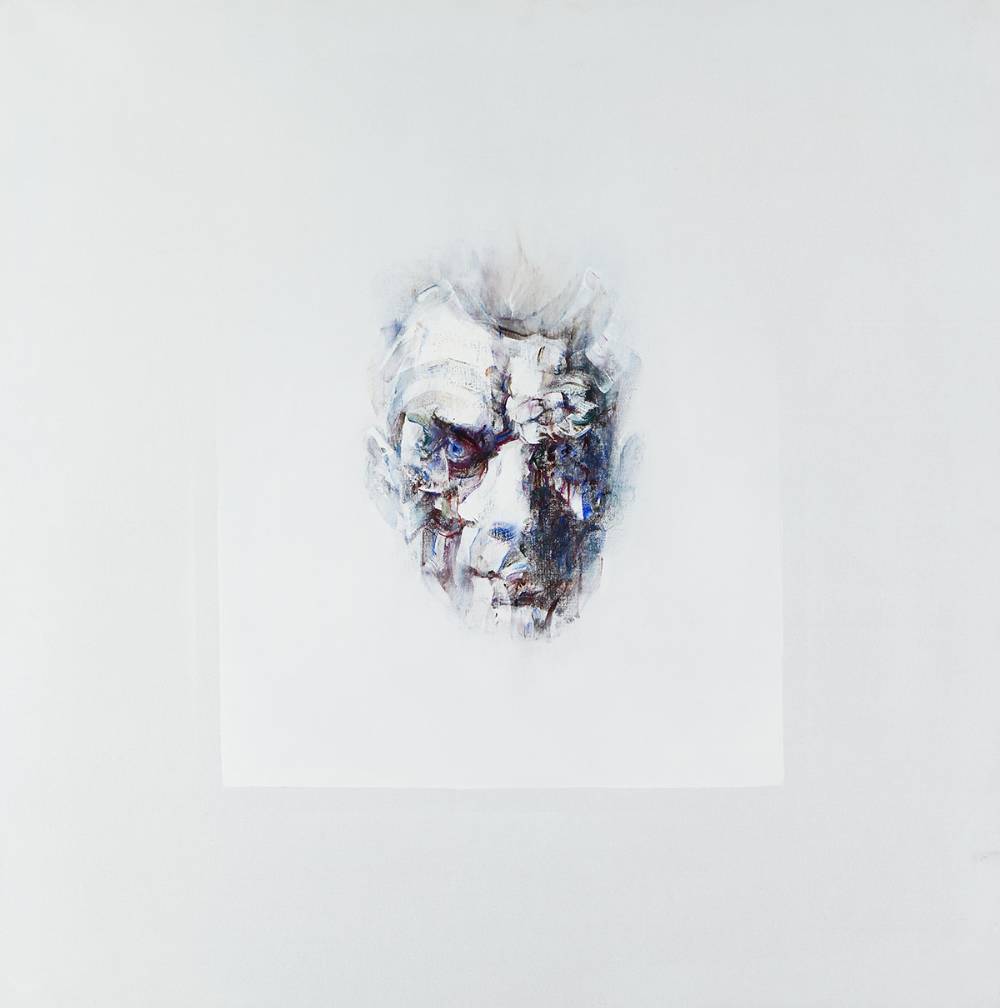
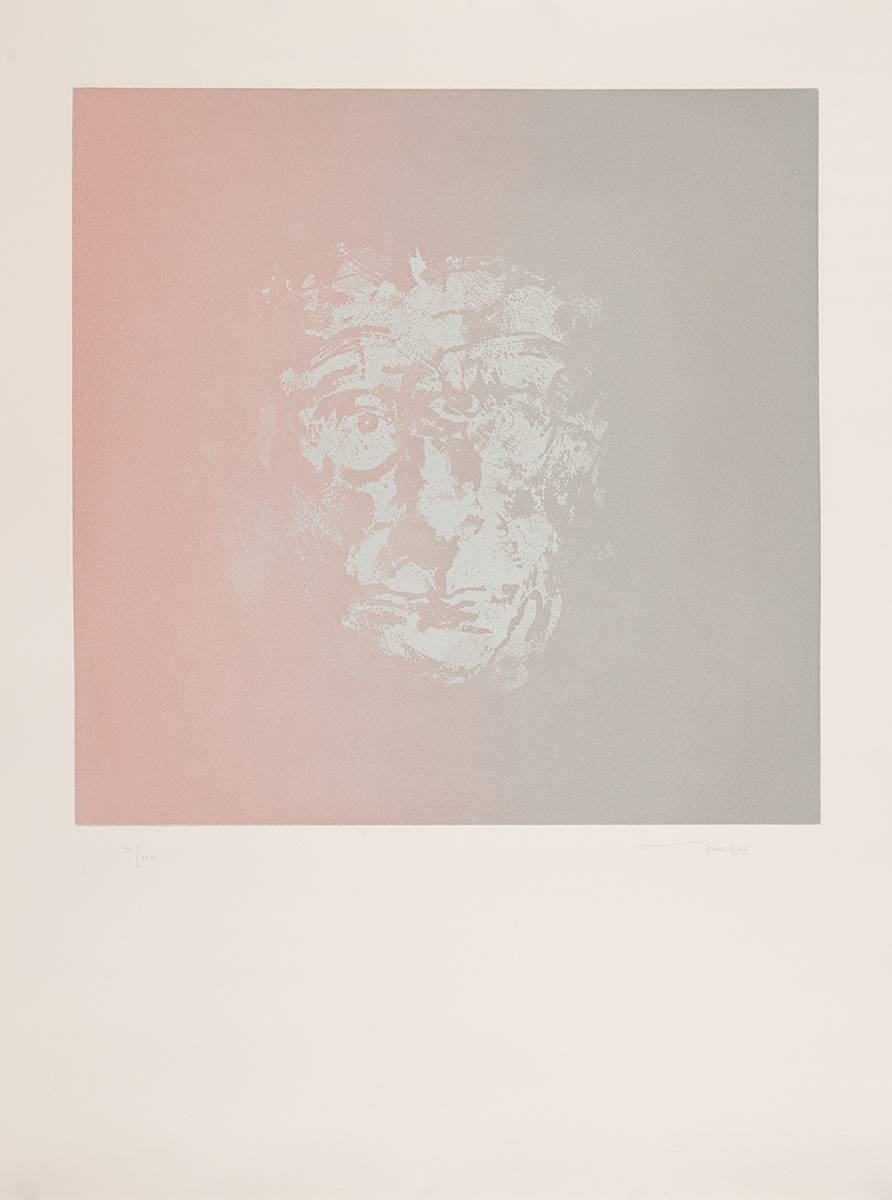


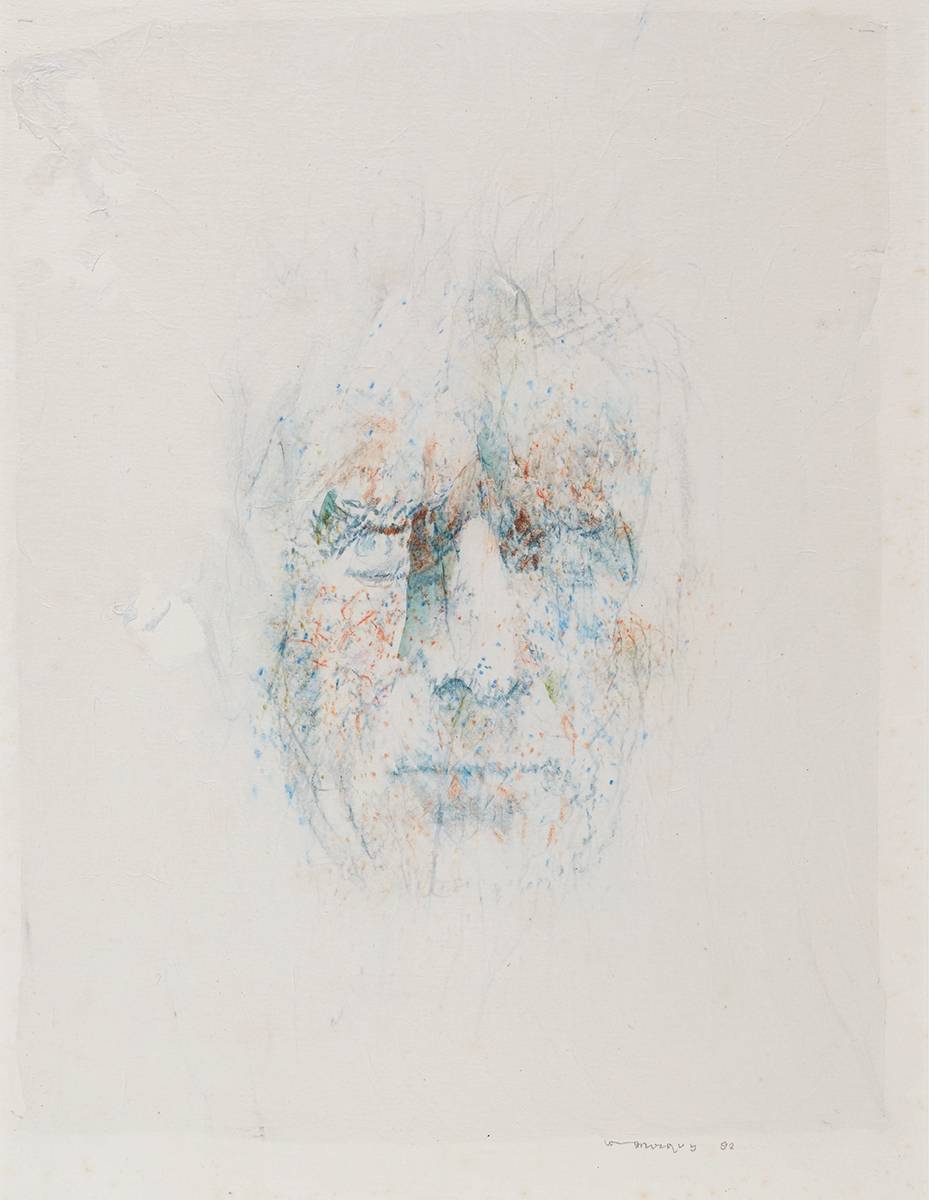

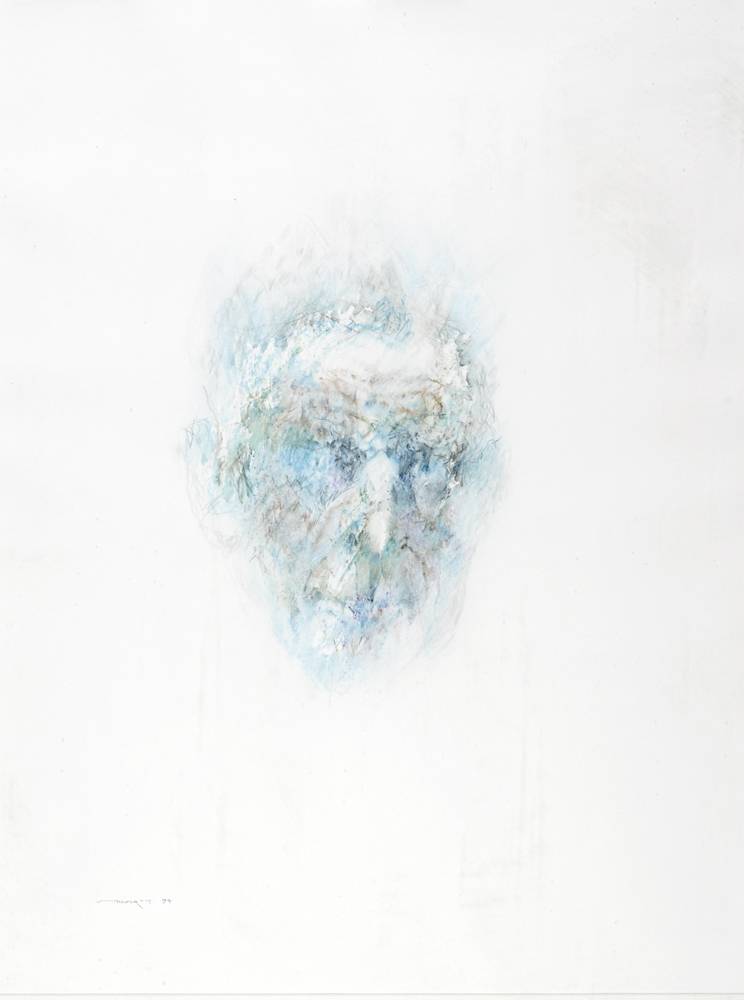
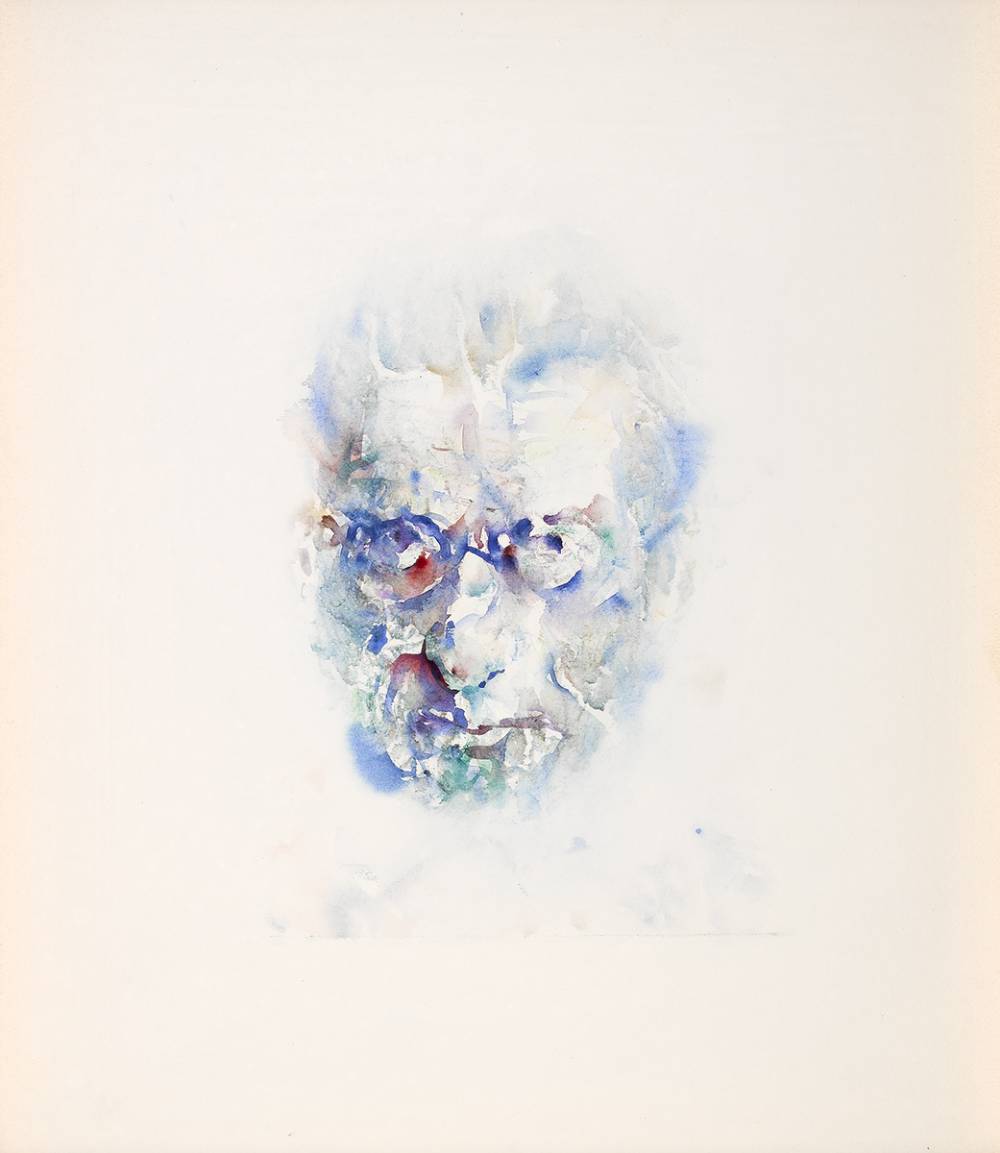
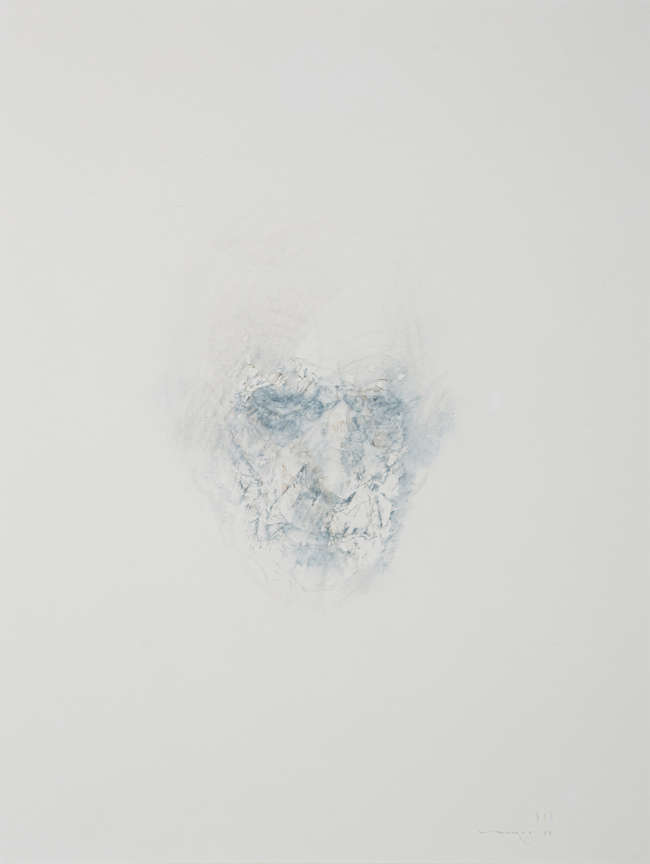



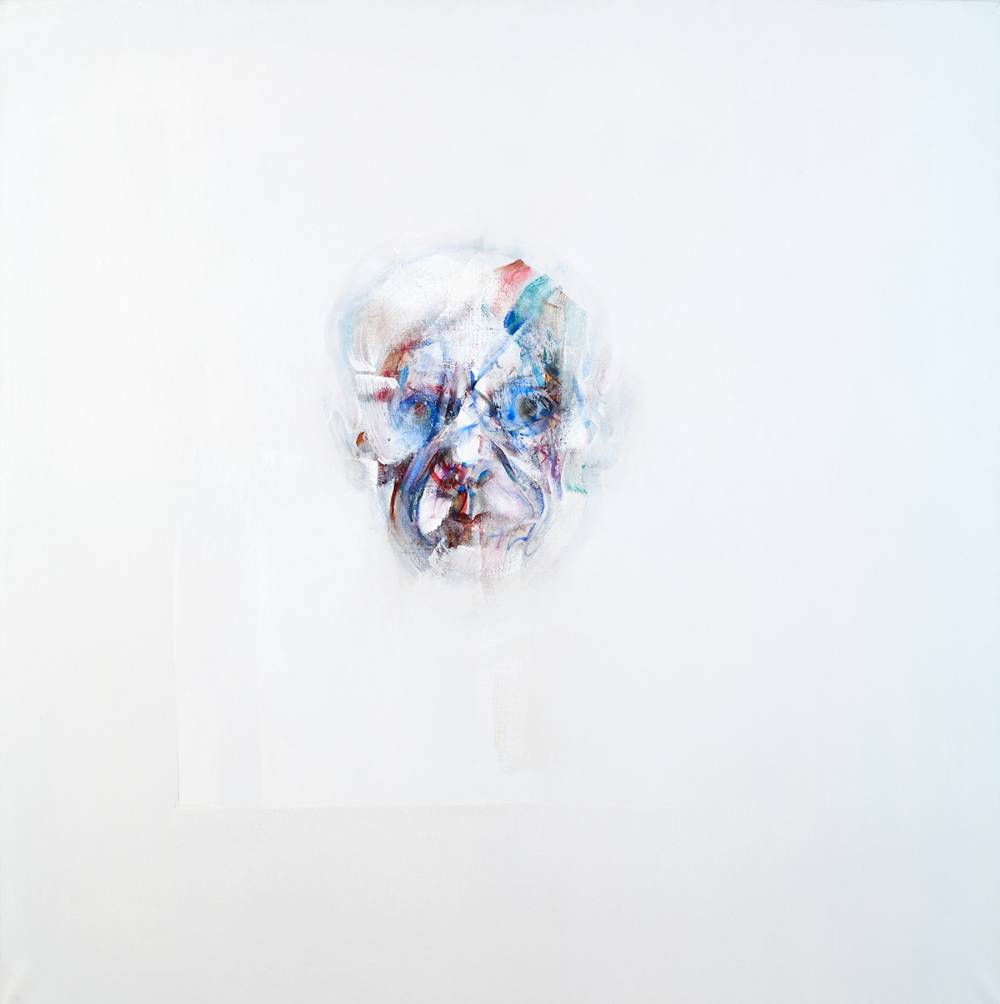

Testen Sie LotSearch und seine Premium-Features 7 Tage - ohne Kosten!
Lassen Sie sich automatisch über neue Objekte in kommenden Auktionen benachrichtigen.
Suchauftrag anlegen